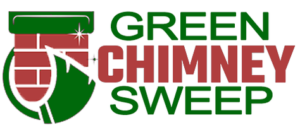Choosing the right chimney liner is crucial for ensuring the safety, efficiency, and longevity of your fireplace or heating appliance. With various types of liners available and factors to consider, homeowners need to make informed decisions. This comprehensive guide will walk you through the process of selecting the appropriate chimney liner for your specific needs, helping you maximize the benefits of a well-maintained chimney system.
Understanding the Importance of Chimney Liners
Before diving into the selection process, it’s essential to understand why chimney liners are necessary and the benefits they offer.
Enhanced Safety: A chimney liner acts as a barrier between the heat of combustion and the structure of your home, reducing the risk of heat transfer and potential fires.
Improved Efficiency: Properly sized and installed liners facilitate optimal airflow, ensuring that your fireplace or stove burns fuel efficiently and produces more heat.
Protection Against Corrosion: Liners protect the chimney structure from corrosive byproducts of combustion, such as acids and moisture, prolonging its lifespan.
Versatility: They allow for flexibility in fuel choices and appliance upgrades, accommodating different venting requirements.
Types of Chimney Liners
There are several types of chimney liners available, each with its own advantages and considerations:
- Clay Tile Liners: Traditional and durable, clay tile liners are suitable for wood-burning fireplaces. They can withstand high temperatures but may crack over time due to thermal stress.
- Metal Liners: Stainless steel or aluminum liners are versatile and can be used with various fuel types, including wood, gas, oil, and pellet stoves. They are easy to install and maintain.
- Cast-in-Place Liners: These liners are created by pouring a cementitious mixture into the chimney, forming a seamless, insulated liner. They are ideal for chimneys that have undergone structural damage or require additional insulation.
Factors to Consider When Choosing a Chimney Liner
When selecting a chimney liner, several factors should be taken into account to ensure compatibility and effectiveness:
Fuel Type: Different fuels produce varying levels of heat and byproducts. Choose a liner that is suitable for the specific fuel type you use to ensure proper venting and safety.
Chimney Size: The dimensions of your chimney will dictate the size and diameter of the liner required. Proper sizing is critical for maintaining optimal airflow and draft.
Local Building Codes: Check local regulations regarding chimney liners and venting requirements. Some jurisdictions may have specific guidelines that dictate the type and installation method of chimney liners.
Liner Material: Consider the durability, heat resistance, and maintenance requirements of different liner materials. Stainless steel liners, for example, are highly durable and suitable for high-temperature applications.
Cost and Longevity: Evaluate the initial cost of installation versus the expected lifespan and maintenance requirements of the liner. A higher initial investment in a durable liner may save money in the long run by reducing the need for repairs and replacements.
Choosing the Right Chimney Liner Installation Method
Once you’ve selected the appropriate chimney liner, the next step is determining the installation method:
- Professional Installation: It is highly recommended to hire a certified chimney sweep or installer for chimney liner installation. They have the expertise, tools, and knowledge to ensure the liner is installed correctly and meets safety standards.
- DIY vs. Professional Installation: While some homeowners may consider DIY installation to save costs, chimney liner installation involves working at heights and dealing with potentially hazardous materials. Professional installation ensures safety and compliance with building codes.
Maintenance and Care of Chimney Liners
To prolong the lifespan and effectiveness of your chimney liner, regular maintenance is essential:
- Annual Inspections: Schedule annual chimney inspections to check for any signs of damage, corrosion, or creosote buildup.
- Regular Cleanings: Keep the chimney clean to prevent creosote buildup, which can increase the risk of chimney fires and affect efficiency.
- Monitor Performance: Pay attention to how your fireplace or stove operates. Changes in draft, efficiency, or unusual odors may indicate a problem with the chimney liner that requires attention.
Conclusion
Choosing the right chimney liner is a critical decision for homeowners looking to ensure the safety, efficiency, and longevity of their fireplace or heating appliance. By considering factors such as fuel type, chimney size, local regulations, and liner material, you can make an informed choice that enhances the performance of your chimney system.
For expert advice and chimney liner installation services, consider contacting a reputable provider like Green Chimney Sweep. Our experienced professionals are dedicated to helping you choose and install the right chimney liner for your specific needs. Schedule a consultation today to get started on enhancing your fireplace’s performance and safety.
